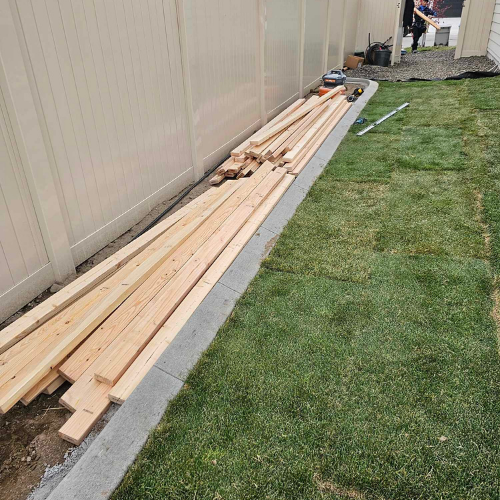WOOD FENCING
TREASURE VALLEY WOODEN FENCE INSTALLERS
I'll guide you to amazing places
Wooden fencing is a popular choice for residential and commercial properties due to its natural appearance, versatility, and durability. Proper installation is essential for the longevity and stability of wooden fencing. Many do not know the many variations of installing a wooden fence and there many benefits. Some variations include:
Types of Wood:
- Cedar: Known for its natural resistance to rot, insects, and decay. Cedar fencing is durable, lightweight, and has a pleasant aroma. It can be left untreated or stained to enhance its appearance and prolong its lifespan.
- Redwood: Similar to cedar, redwood is naturally resistant to decay and insects. It has a rich, reddish-brown color and is prized for its beauty and durability. Redwood fencing is often left untreated or finished with a clear sealant.
- Pressure-Treated Pine: Treated with chemical preservatives to resist rot, decay, and insect damage. Pressure-treated pine fencing is cost-effective, widely available, and can be stained or painted to match the desired aesthetic.
- Other Hardwoods: Tropical hardwoods such as ipe, mahogany, and teak are extremely durable and resistant to rot and decay. While more expensive than softwoods like cedar or pine, hardwood fencing offers exceptional longevity and beauty.
- Styles and Designs:
- Picket Fencing: Classic and timeless, picket fences feature evenly spaced vertical boards (pickets) attached to horizontal rails. Picket fences come in various heights and styles, including traditional, scalloped, and decorative designs.
- Privacy Fencing: Designed to provide seclusion and security, privacy fences feature closely spaced vertical boards without gaps. They can be built to various heights and may include lattice or decorative tops for added style.
- Lattice Fencing: Combines solid panels with open-grid sections of lattice for a decorative touch. Lattice fencing is often used as a partial screen or accent to provide privacy while maintaining airflow and visibility.
- Split Rail Fencing: Characterized by horizontal rails with notched posts, split rail fences have a rustic, country charm. They are often used for decorative purposes or to define property boundaries in rural settings.
Installation:
- Fencing posts should be set in concrete footings below the frost line to prevent shifting and settling.
- Rails are attached to the posts, and pickets or panels are then installed between the rails. Gates, hardware, and finishing touches such as caps or finials complete the installation.
Maintenance:
- Regular maintenance is necessary to protect wooden fencing from weathering, moisture, and UV exposure. This may include cleaning, staining, sealing, or painting the fence every few years.
- Inspecting for signs of damage, such as rot, insect infestation, or loose boards, and making repairs as needed will help prolong the lifespan of the fence.
Wooden fencing adds beauty, privacy, and security to outdoor spaces while blending harmoniously with the natural surroundings. With proper care and maintenance, wooden fences can provide years of enjoyment and functionality.
